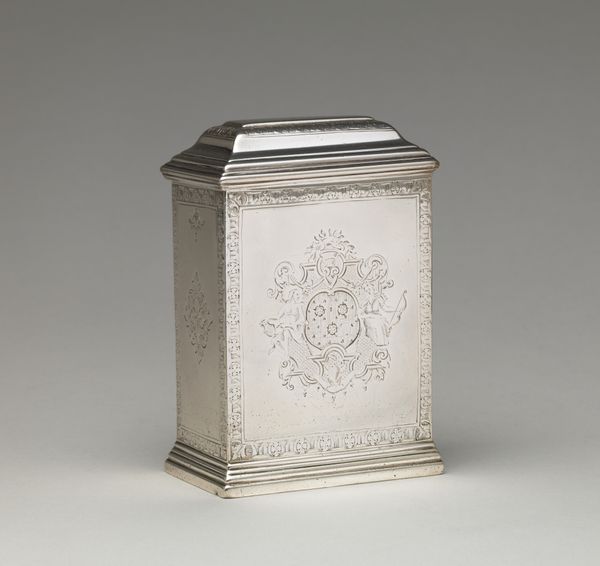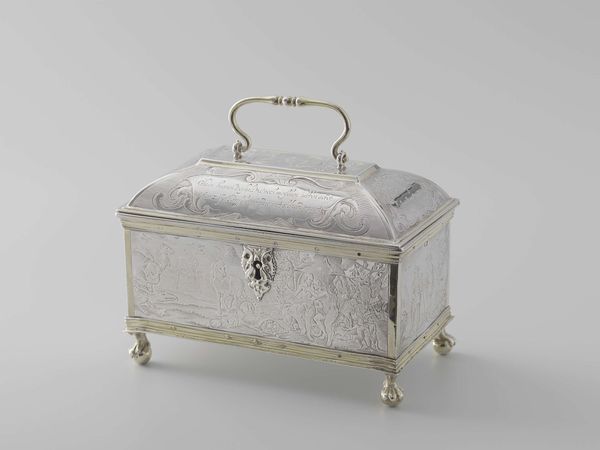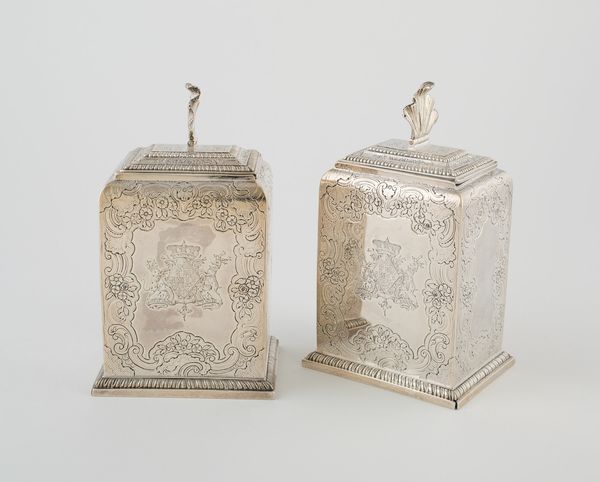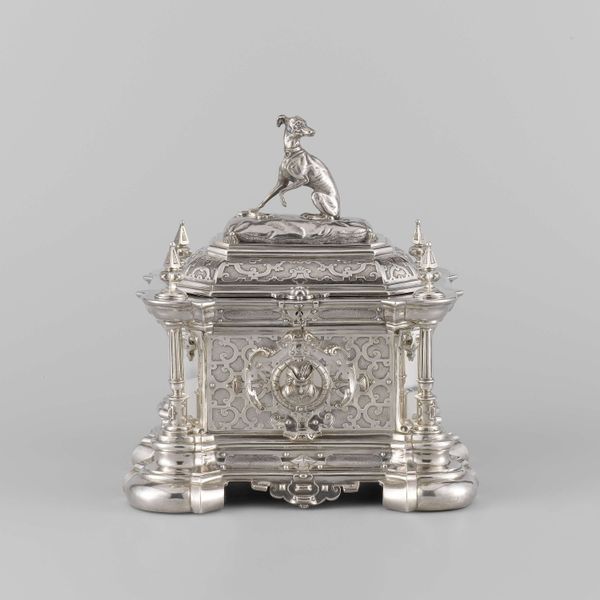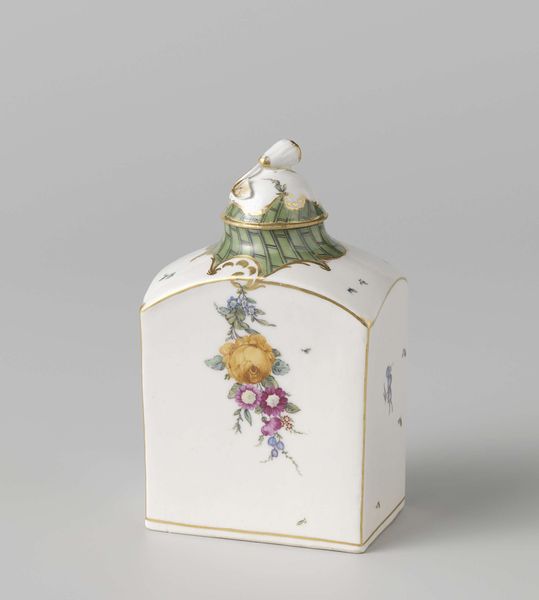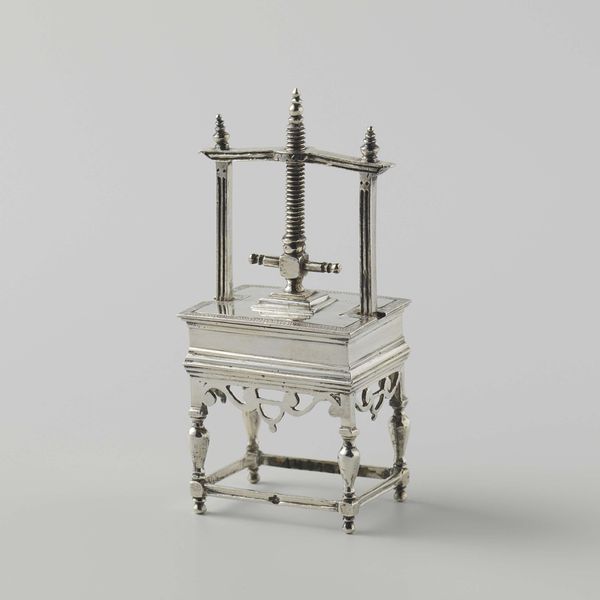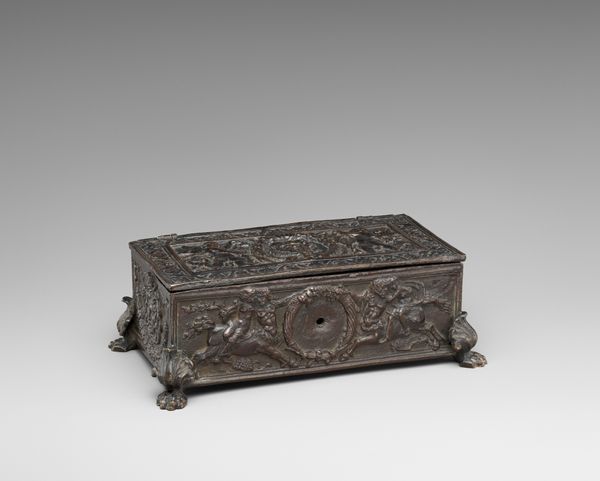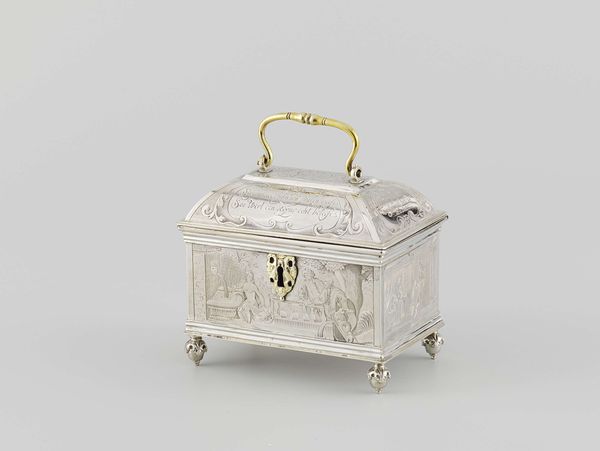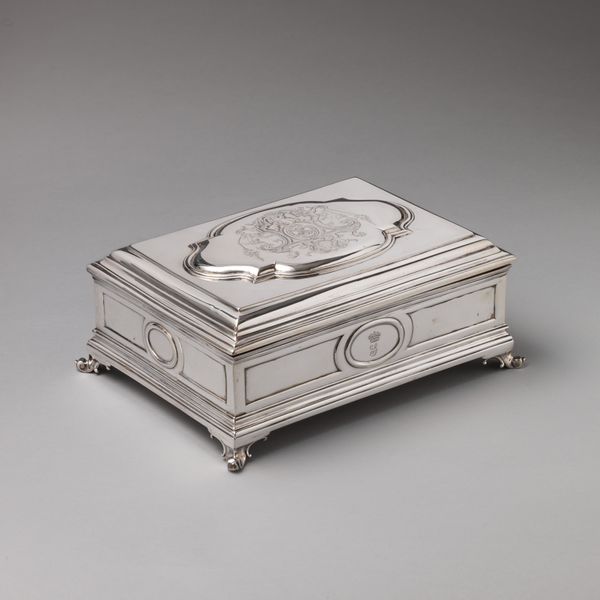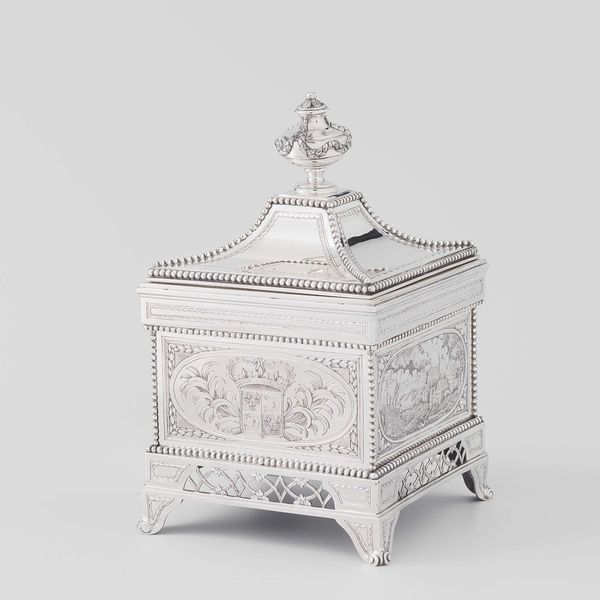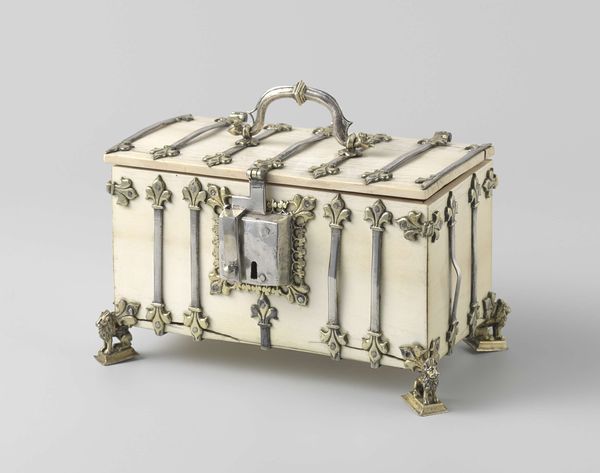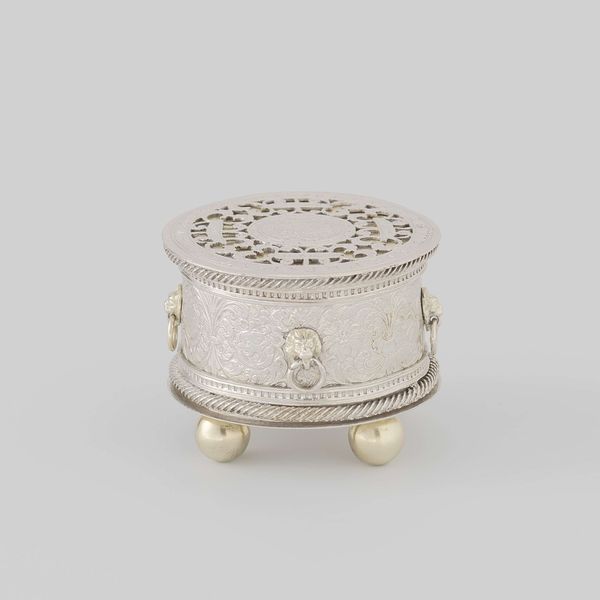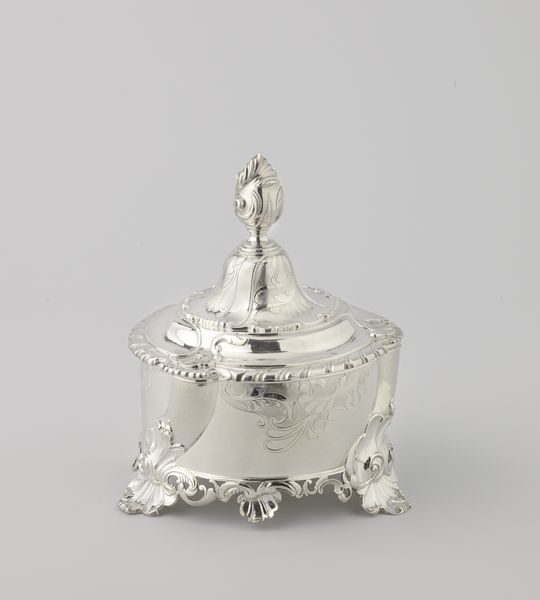
silver, metal
#
silver
#
baroque
#
metal
#
decorative-art
Dimensions: height 12.3 cm, length 7.0 cm, width 4.5 cm, weight 179 gr
Copyright: Rijks Museum: Open Domain
Curator: Standing before us is "Theebus," a silver tea caddy, dating from between 1675 and 1700, and crafted by Theodorus Huigen. Editor: It's quite charming. Despite the wear and some discoloration, there's something inherently dignified about its simple, boxy form elevated on those round feet. Curator: The piece certainly speaks to the rise of tea culture during the Baroque period. Tea transformed from an exotic rarity to a social ritual, and this caddy became a symbol of refined domesticity. Its material richness highlights social changes. Editor: The imagery that survives seems so purposeful; what stories can we unlock? The floral motifs bordering each side and the central foliate design, these were carefully selected and imbued with meaning for the original owners. I would say they probably suggest prosperity. Curator: These symbolic flourishes definitely provided reassurance to those in this period who saw orderliness in flora, particularly a kind of cultivated abundance. This would have carried great emotional and psychological weight for the Dutch during the later 17th century, the Dutch Golden Age! The details, like the hinged lid, reveal an interesting blend of artistry and utility. Editor: There's something poignant about objects like this. They were created to hold, to preserve—in this case, precious tea leaves—but also memories and aspirations. Do you find it strange how Baroque decorative art can sometimes feel both opulent and somehow...constrained? Curator: I understand what you mean. The Baroque was a period of immense social and political upheaval reflected in art, where grandeur often masked a deeper uncertainty. Tea was already very expensive! I also believe that silverware reflected cultural and spiritual aspirations of elites more broadly. Editor: Considering the economic shifts of that era, objects like this provide insights into how luxury and social identity were communicated. Curator: Absolutely. This caddy isn’t just a container for tea; it's a vessel brimming with history, ready to be interpreted, even now. Editor: Well said. A humble yet eloquent witness to a bygone era.
Comments
No comments
Be the first to comment and join the conversation on the ultimate creative platform.

